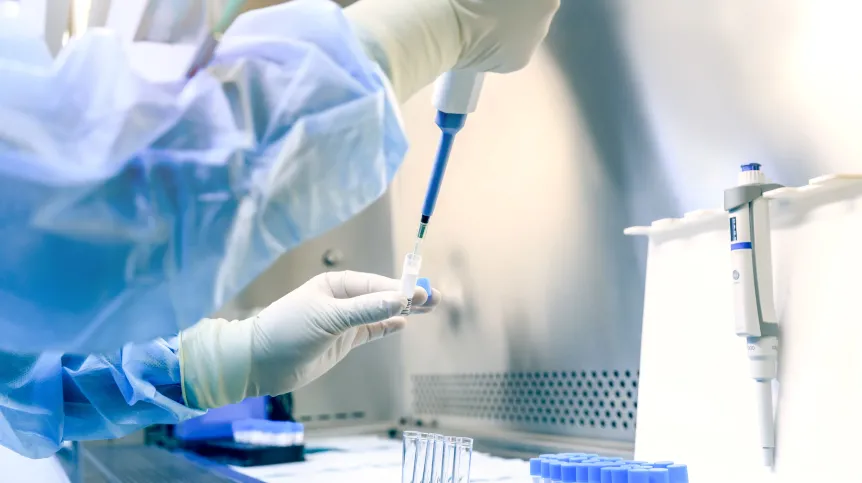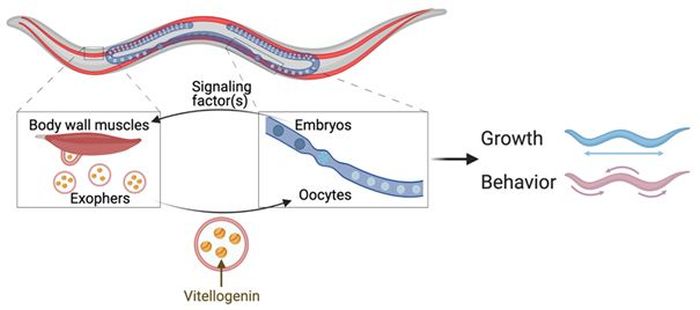
Breakthrough research says a ‘metabolic waste management system’ known as exophers could promote reproductive fitness.
Scientists from the Polish Academy of Science’s International Institute of Molecular Mechanisms and Machines, and Institute of Biochemistry and Biophysics found that the development of embryos in the uterus triggers the formation of exophers (exopheresis) in muscle tissue.
The vesicles transport the yolk proteins synthesized by the muscles and ultimately deliver them to the newly formed oocytes.
Consequently, the offspring of mothers with a large number of muscle exophers grew faster.
Dr. Michał Turek, head of the group at the Institute of Biochemistry and Biophysics PAS, said: “The use of the most abundant tissue, the muscle tissue, to support the nourishment of the next generation through exophers is an example of a clever reproductive strategy.”
The breakthrough in exopher research made the cover of the August issue of EMBO reports and the News & Views section.
Each part of our body consists of cells, small units that cooperate with each other. While there are many different types of cells, they all share common features.
For example, they all need proteins that are the building blocks of complex cellular structures. Proteins tend to break down and they may wear out. They must be disposed of and replaced with new ones. The two main systems in the cell involved in this process: the ubiquitin-proteasome system and autophagy have one thing in common: they recycle proteins inside the cell.

Schematic presentation of the research results. Muscles can excrete cellular contents through large exophers. Formation of exophers is gender specific and fertility dependent. Muscle exopheresis is a process regulated by the embryos developing in the uterus. Insufficient amount of nutrients for embryos induces exopheresis. Exophers act as transporters for the yolk proteins produced by the muscles that are used to feed the next generation. (Credit: W. Pokrzywa. Graphical abstract created with BioRender.com).
But, Wojciech Pokrzywa, one of the team leaders, said: “We hypothesized that the formation of such large vesicles in order to remove only unwanted cell components may not be their primary function.”
Consequently, scientists found that the muscle cells of worms can also produce exophers, proving that large muscle exophers have a new role in reproduction that goes far beyond the excretion of toxic proteins.
Turek and Pokrzywa said: “Interestingly, yolk proteins can be synthesized in the muscles of vertebrates. We can speculate that the role of muscle exopheresis in supporting the development of offspring is evolutionarily preserved.”
Professor Agnieszka Chacińska, director of the the International Institute of Molecular Mechanisms and Machines and head of the research group at the University of Warsaw, added: “This process represents a transgenerational metabolic and resource management system that supports the embryos in the uterus by providing them with the means to adapt to environmental conditions. Moreover, this research open up new horizons in the study of exophers, a poorly understood class of secretory vesicles.”
The publication is available here.
PAP - Science in Poland
agt/ kap/
tr. RL













